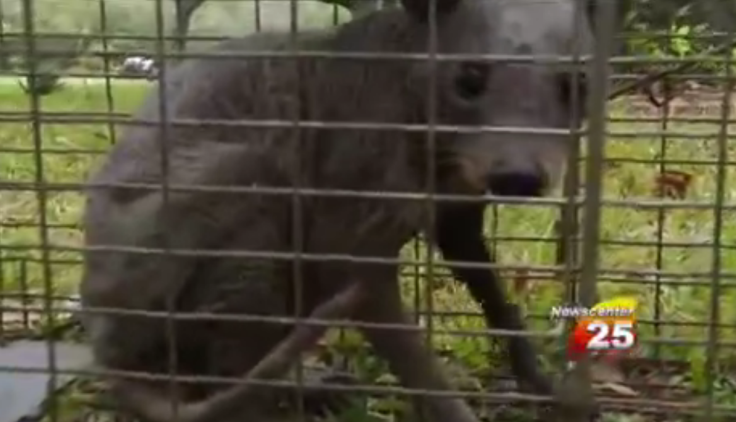Chupacabra Caught Alive In Texas? Family Claims 'Strange Animal' Is Legendary Creature [PHOTO]

A Texas family claims to have caught a chupacabra.
The creature, which has a reputation for killing goats and chickens, has remained in the realm of folklore since the 1990s, when livestock turned up dead in Puerto Rico, drained of blood with puncture wounds in their necks. The family from Ratcliffe, Texas, claims they caught a chupacabra in their backyard on March 30, KAVU-TV in Victoria reports.
"He saw this strange animal up here eating corn," Jackie Stock said, describing what her husband saw before capturing the mysterious animal. “He called me to come and look, and I said, ‘Bubba, that looks like a baby chupacabra.’”
Stock captured the animal and placed it in a cage. It’s hairless with large claws, many teeth and a “ferocious” growl. Brent Ortego, wildlife diversity biologist with Texas Parks and Wildlife, says the animal is most likely a coyote, dog or fox. But some residents disagree.
“I hunted coons for 20 years with dogs and I ain’t ever seen anything that looks like that right there,” Ratcliffe resident Arlen Parma said, adding that its growl is particularly distinct.
“A coon doesn’t make that noise, or a possum. What makes that noise? I guess a chupacabra does,” Parma said.
Chupacabra, which is literally translated as "goat sucker" from Spanish, describes the urban legend of a blood-sucking animal known to grow to about 3 to 4 feet tall. It supposedly has large eyes, fangs, a forked tongue and quills down its back. Reports of the mysterious creature that attacks livestock have been reported in Puerto Rico, Mexico, Chile, Brazil and into the United States, from Texas to Florida, Michigan, Maine and Oregon.
The legend of chupacabra may have been inspired by a “livestock-killing vampire” named El Vampiro de Moca that terrorized a small town in Puerto Rico in the 1970s.
For now, the alleged chupacabra is being fed cat food and corn until someone can identify what animal it is.
"We were just trying to figure out what it is because we've never seen anything like that on our place before," Stock said.
© Copyright IBTimes 2024. All rights reserved.






















